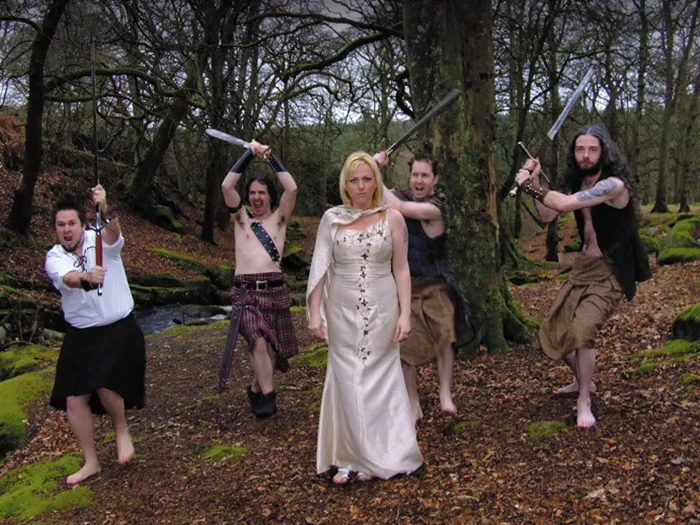Irish heavy metal, often referred to as Celtic metal, has emerged as a dynamic and distinctive subgenre within the broader heavy metal scene. Characterized by its fusion of traditional Irish music elements with the powerful and intense sound of heavy metal, this genre has captivated audiences worldwide with its unique blend of musical influences. In this article, we will delve deep into the roots, evolution, bands, and cultural significance of Irish heavy metal, exploring what sets it apart and makes it a compelling force in the realm of metal music.
Historical Roots and Influences
To understand Irish heavy metal, it’s crucial to trace its historical roots and influences. Ireland has a rich musical heritage, encompassing traditional Irish folk music, which is known for its lively melodies, intricate rhythms, and storytelling lyrics. These traditional elements often feature instruments like the fiddle, tin whistle, bodhrán (Irish drum), and uilleann pipes.
In the realm of heavy metal, bands like Thin Lizzy, formed in the early 1970s, laid the groundwork for Irish contributions to the metal genre. Thin Lizzy’s blend of hard rock and twin-guitar harmonies influenced countless metal bands globally and showcased Ireland’s potential in the heavier music spectrum.
The Emergence of Celtic Metal
The term “Celtic metal” or “Celtic metal” emerged in the late 1980s and early 1990s to describe bands that incorporated Celtic or Irish folk elements into their metal sound. This fusion gave rise to a distinct subgenre that celebrated both the intensity of metal and the melodic, storytelling aspects of traditional Irish music.
One of the pioneering bands in this subgenre was Cruachan, formed in Dublin in 1992. Combining black metal with Irish folk instruments and themes, Cruachan’s early albums like “Tuatha Na Gael” (1995) and “The Middle Kingdom” (2000) showcased the potential of blending Irish culture with heavy metal.
Musical Characteristics
Irish heavy metal is characterized by several musical elements that set it apart from other metal subgenres:
Instrumentation: Traditional Irish instruments such as the fiddle, tin whistle, and bodhrán are often integrated alongside standard metal instruments like guitars, bass, and drums. This fusion creates a unique sonic texture that bridges the gap between folk and metal.
Melodic Themes: Irish heavy metal often incorporates melodic themes inspired by Irish folk tunes. These melodies, often played on folk instruments or mirrored by electric guitars, add a distinct flavor to the music and contribute to its storytelling nature.
Lyrics and Themes: Themes in Irish heavy metal frequently draw from Irish mythology, folklore, history, and cultural motifs. These lyrical themes, coupled with the music’s intensity, create a powerful narrative that resonates with fans of both metal and Irish heritage.
Rhythmic Patterns: The rhythmic patterns in Irish heavy metal can vary widely, from driving double bass drumming reminiscent of black metal to folk-inspired jigs and reels. This diversity adds depth and complexity to the music, keeping listeners engaged and intrigued.
Notable Bands and Albums
Several bands have contributed significantly to the evolution and popularity of Irish heavy metal:
Cruachan: As mentioned earlier, Cruachan played a pivotal role in defining the Celtic metal sound. Albums like “Folk-Lore” (2002) and “Pagan” (2004) continue to be revered within the genre.
Primordial: Hailing from Dublin, Primordial combines elements of black metal, folk, and Celtic influences. Their albums, including “To the Nameless Dead” (2007) and “Where Greater Men Have Fallen” (2014), showcase their atmospheric and intense approach to Irish metal.
Mael Mórdha: Known for their epic, doom-laden sound, Mael Mórdha’s albums like “Gealtacht Mael Mórdha” (2005) and “Manannán” (2010) delve deep into Irish mythology and history, creating a powerful sonic experience.
Cruachan: Among the newer generation of Irish heavy metal bands, Celtachor stands out for their blending of traditional Irish music with blackened death metal. Albums like “Ninth Wave” (2017) and “Fiannaíocht” (2020) showcase their unique approach to the genre.
Cultural Significance and Global Impact
Irish heavy metal not only serves as a platform for musical expression but also carries cultural significance and global impact:
Preservation of Irish Heritage: Through their music, Irish heavy metal bands contribute to the preservation and celebration of Irish heritage, mythology, and folklore. This cultural connection resonates with fans worldwide and fosters a deeper appreciation for Ireland’s rich history.
Global Reach: While rooted in Irish culture, Celtic metal has a global appeal. Bands like Cruachan and Primordial have toured extensively, gaining a dedicated fan base across Europe, North America, and beyond. This global reach highlights the universality of metal music and its ability to transcend cultural boundaries.
Influence on Other Genres: The fusion of folk and metal in Irish heavy metal has influenced artists in other genres, leading to experimentation and innovation. Elements of Celtic music can be heard in genres ranging from folk metal to symphonic metal, showcasing the genre’s enduring impact on the wider metal scene.
Conclusion
As Irish heavy metal continues to evolve, it faces both challenges and opportunities. The genre’s ability to stay true to its roots while embracing innovation will determine its future trajectory. With a new generation of bands emerging and a growing global audience, the future looks promising for Irish heavy metal.
In conclusion, Irish heavy metal stands as a testament to the power of musical fusion and cultural expression. By blending the raw energy of heavy metal with the rich tapestry of Irish music and heritage, bands in this genre have created a vibrant and compelling musical landscape. As fans continue to embrace and support Irish heavy metal, its influence and legacy are poised to endure for years to come.

